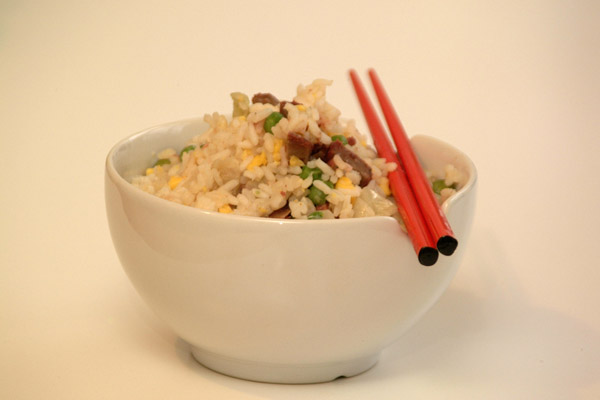 Steam flatfish with ginger and green onion
Steam flatfish with ginger and green onion
 Boiled pork with spices
Boiled pork with spicesChinese food now holds a popular place among the entire population of the world. You can find a Chinese restaurant in every major city and in many smaller areas of the world as well. Why is Chinese food so popular? Is Chinese food healthy? What is the history of Chinese food?
The History of Chinese Food
The history of Chinese food1 is an interesting one. Unlike many cultures the Chinese believe that the preparation of food is an art and not simply a craft. The art of cooking Chinese food can include dishes and food preparation techniques which are difficult to develop and may require the expertise of a chef with lots of experience. One such technique is noodle pulling (scroll down to the bottom of the page to learn more about this technique). Noodle pulling requires skill and lots of practice and results in a delicious noodle dish. This article will refer to noodle pulling later on, but for now, let’s go back to the history of Chinese food.
Chinese food and the way it is prepared is very much influenced by the two major philosophies, which influence the entire Chinese culture. These dominant philosophies are Confucianism and Taoism. Both have these philosophies have influenced the way that the Chinese people cook and the way that they enjoy their food..
Confucianism and Chinese Cuisine
Confucius was the man behind the Confucianism beliefs. Among many other standards Confucius established standards for proper table etiquette and for the appearance and taste of Chinese food. One of the standards set by Confucius (you might have noticed this at an authentic Chinese restaurant) is that food must be cut into small bite size pieces before serving the dish. This is a custom that is definitely unique to the Chinese culture.
Knives at the dinner table are also considered to be a sign of very poor taste by those who embrace Confucianism beliefs. The standards of quality and taste that Confucius recommended required the perfect blend of ingredients, herbs and condiments--a blend which would result in the perfect combination of flavor. Confucius also emphasized the importance of the texture and color of a dish, and taught that food must be prepared and eaten with harmony. Interestingly enough, Confucius was also of the opinion that an excellent cook must first make an excellent matchmaker.
Taoism and Chinese Cuisine
Those who follow the Taoism beliefs focus on the health benefits of particular foods vs. the presentation of the same. Taoists search for foods that will increase their health and longevity. They search for foods that have healing powers. Many times these benefits were often referred to as ‘life giving powers’. For instance, the Chinese found that ginger, which can be considered to be a garnish or a condiment was found to be a remedy for upset stomachs or a remedy for colds.
Is Chinese Food Healthy?
Chinese food, when authentic is probably the healthiest food in the world. Some restaurants, which are not authentic, prepare their menu with highly saturated fats or with meats that contain unhealthy amounts of animal fat. These Chinese restaurants are not recommended and they are both neither authentic nor healthy.
Good Chinese food however, is prepared and cooked with poly-unsaturated oils. Authentic Chinese food does not require the use of milk-fat ingredients such as cream, butter or cheese. Meat is used, but not in abundance, which makes it easy for those who love authentic Chinese food to avoid high levels of animal fat. Many believe that authentic Chinese food is really the ideal diet.
Chinese Restaurants in Every Part of the Nation
Whether it is in a Tennessee Chinese Restaurant to a New York Chinese restaurant you are going to find culinary dishes that are both healthy and delicious. Savor the flavor with Chinese food!
















